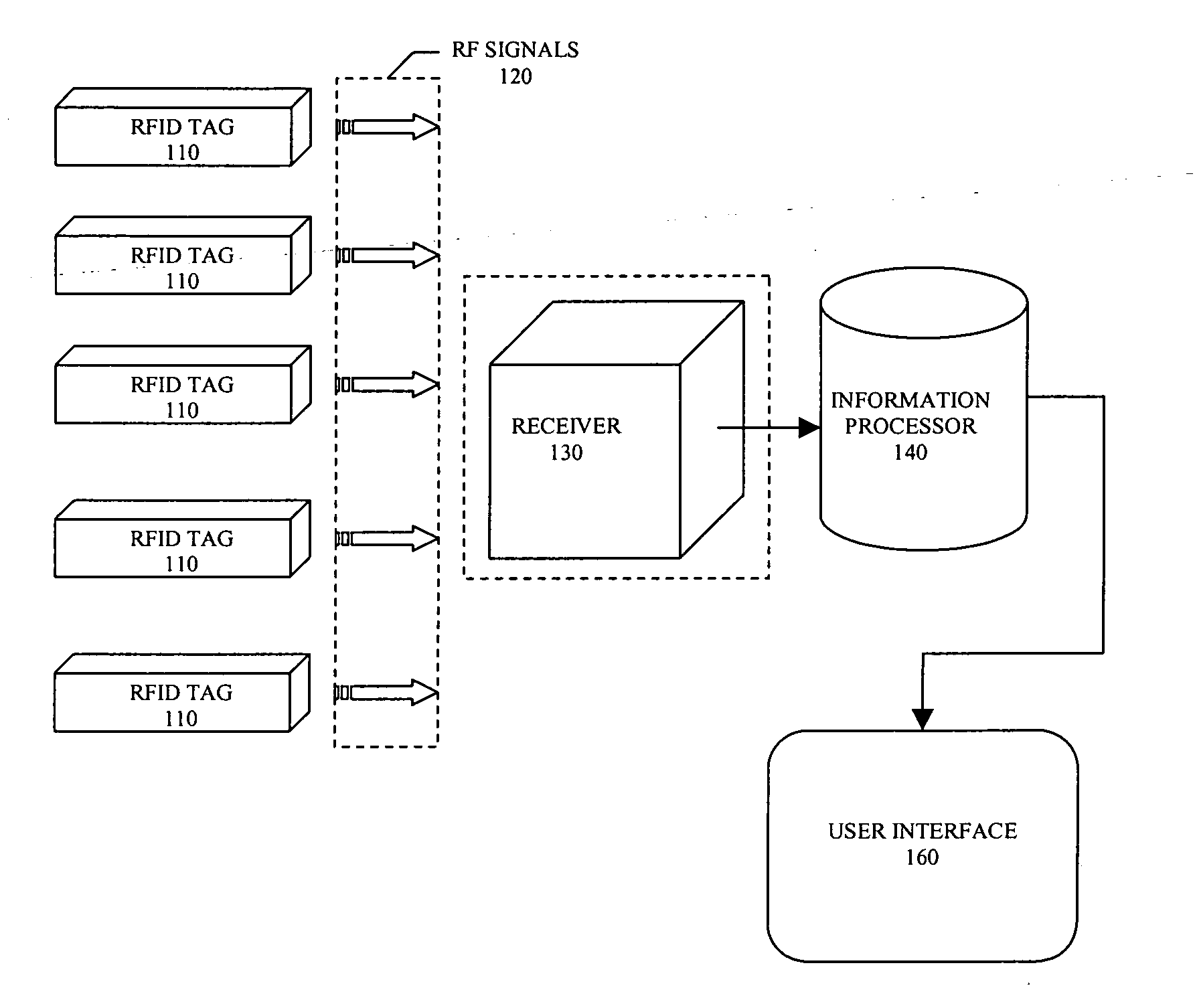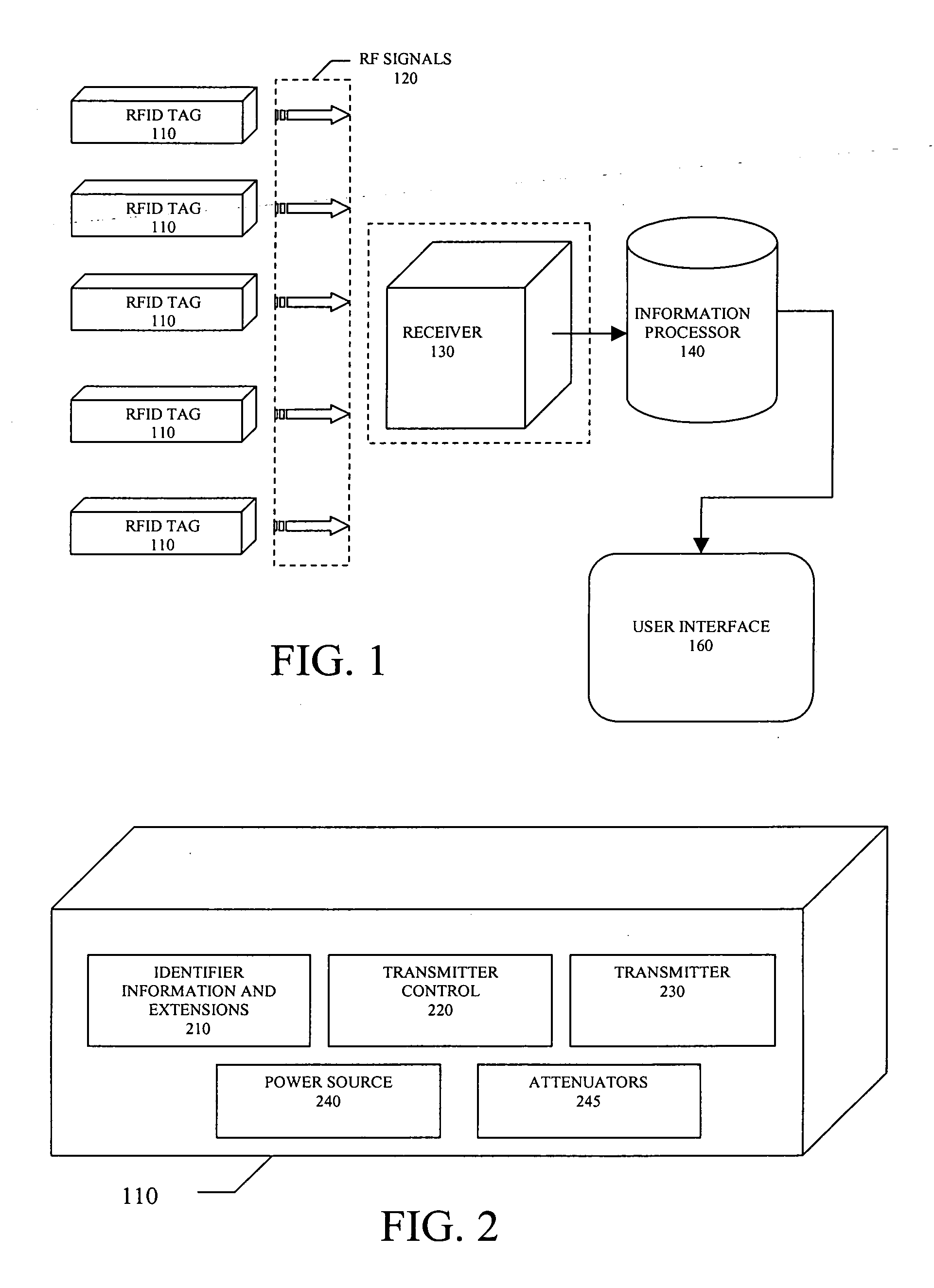RFID multiple range method and system
- Summary
- Abstract
- Description
- Claims
- Application Information
AI Technical Summary
Benefits of technology
Problems solved by technology
Method used
Image
Examples
Embodiment Construction
[0034] Referring to FIG. 1, in one embodiment of the invention each RFID multiple range tag 110 is attached in a semi-permanent manner to the desired object. The identifier information of the RFID tag 110 and an index regarding the object to which the tag is attached is provided in a database electronically stored on the information processor 140. The RFID tags 110 that are attached to the desired objects transmit their identifier information using RF signals 120 to a receiver 130 at an origin location.
[0035] The receiver 130 is interconnected to the information processor 140. In this manner the information processor 140 is continually and automatically monitoring the identifier information of all of the RFID tags 110 that are within RF reception range of the receiver 130 located at an origin. The information processor 140 analyzes and determines the spatial location of each RFID tag 100 from the receiver 130 based on the RF signals 120 received.
[0036] Using the information collec...
PUM
 Login to View More
Login to View More Abstract
Description
Claims
Application Information
 Login to View More
Login to View More - R&D
- Intellectual Property
- Life Sciences
- Materials
- Tech Scout
- Unparalleled Data Quality
- Higher Quality Content
- 60% Fewer Hallucinations
Browse by: Latest US Patents, China's latest patents, Technical Efficacy Thesaurus, Application Domain, Technology Topic, Popular Technical Reports.
© 2025 PatSnap. All rights reserved.Legal|Privacy policy|Modern Slavery Act Transparency Statement|Sitemap|About US| Contact US: help@patsnap.com



